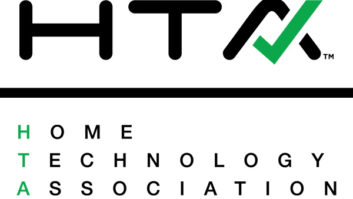For years, innovative AV products have drawn integrators and their customers to the custom installation channel like proverbial moths to a flame. But, if responses from leading industry professionals are any indication, business innovation will drive the focus for custom integration companies as they turn their attention toward 2013.
When asked to describe what “game-changing ideas” they were exploring for next year, most respondents pointed to business processes, rather than new products or product categories, as their areas of focus. While IT services, energy monitoring, security system sales, shading systems, and app-based control systems also factored into responses, most integrators said they are exploring better methods for job costing and accounting, focusing on charging for labor consistently, and implementing operational software and processes.

For instance, Barry Reiner, co-owner of InnerSpace Electronics, in Port Chester, NY, said that the Great Recession had inspired him to run a “leaner machine that can do more.” With this streamlined management team now in place, he’s found that sharing projected profit margins and budgeted “man days” with more members of his team has led to more efficiency.
“By sharing expectations with the staff, they now know what it will take to complete a job at or under budget,” Reiner explained, noting that crews that consistently bring a job in in less than projected time are awarded with financial bonuses.
“You can’t really set that as an expectation if you don’t share what that budget is with them,” Reiner added.
When InnerSpace bids a project, its management team looks at the resources it used previously on similar installs, how efficient they were before, and how much time it took them to the complete the job. Then the company has more information for how to price the next project.
Getting the Books in Order
Former CEDIA chairman Randy Stearns, a rare custom integration business owner with an MBA, chose to be more instructive in his answers, rather than revealing personal ideas for 2013. The owner of Alameda, California’s Engineered Environments said that he remains “shocked” by the poor accounting practices and insufficient financial reporting that he observes in the industry, particularly from companies that Engineered Environments has acquired in recent years.
“Many (or dare I say, most) companies to this day do not use job costing for all of their projectrelated labor and purchases (not to mention freight, taxes, travel, and sales commissions), do not recognize revenues on a percentage-of-completion basis, fail to account for customer deposits and inventory properly, and have incomplete personnel records,” he stated. “As a result, they put themselves and their business at risk because they don’t have the answers to basic questions like, ‘Am I estimating labor properly?’ ‘Which employees are making the greatest impact on my bottom line?’ and ‘Is this project profitable and, if so, by how much?’”

Stearns contends that investing in quality accounting software, staff, and practices enables a business owner to gain control of his or her company in a way that is unachievable without it.
Sean Weiner, president of Starr Systems Design in Baltimore, MD, is adding more software for a different purpose. He said that the biggest challenge in any contracting business is communication and that custom integrators have even more “moving parts” than most contractors, making it even more difficult to have timely, accurate information where and when they want it. Weiner said that his company is migrating all of its “independent” systems to a single platform, so that it has engineering, accounting, and project management data in one place. “This shift will make all of our jobs easier and more efficient,” he said.
Weiner is also looking to lower his company’s fixed expenses by outsourcing several internal functions, such as accounting, engineering, and IT, and to control variable expenses by adding GPS to his company vehicles and allowing his technicians to take these vehicles home at night. “They can head straight to the jobsite each day rather than stopping by the office to pick up a truck,” he noted. “We are also looking at more aggressive ‘pay for performance’ payroll strategies to improve efficiencies and keep job costs predictable.”

Tom Stone co-owner of Stone Glidden in King of Prussia, PA, said that he plans to double down on the best practices that transformed his business over the last 24 months. Since his company stopped selling TVs, he said, its gross margins have improved and “cash flow has gone through the roof.” Stone Glidden also began using a software package called Sales Toolz to establish an approved budget at the first sales meeting with every client. “If a client won’t commit to a budget, we gracefully refer them to someone else,” Stone said. “It’s a huge time saver and an unbelievable tool to qualify a client and differentiate from competitors who are unable to provide an accurate budget.”
Getting Paid
Los Angeles-based DSI Entertainment Systems is getting more serious about job costing and shifting its business model toward making profits through professional services. “We all need to come to the realization that we can no longer afford to give our labor away for free,” said DSI CEO Eric Thies. “Design, documentation, project management, programming, and installation need to be profit centers because the categories that [once] subsidized labor are rapidly disappearing, ie: TVs, touchpanels, source gear, video servers, etc. I see a lot of integrators that are stuck in their old ways and not moving toward this model. I fear they will not last very long.”
Mark LaFave, Digital Playground (showroom) director for Bedford, New Hampshire’s Maverick Integration, said that his company is finally learning to pay itself for its successes. “We chose a profit number to strive for, calculated the resources (primarily personnel) required to achieve our profit goals, and went about investing,” he said.

LaFave added that warranty work at Maverick is done as efficiently as possible, system upgrades are performed routinely, and new technologies are introduced and sold at a steady pace. “In our estimation, not keeping the client informed of new and better choices for their homes and offices is a disservice,” he “Customer service might like the latest and greatest means to grow the business until you realize it’s not a slogan, it’s a result.”
Project Management Tools
After what he said has been five years of planning and development, Greg Margolis’s company, HomeTronics in Dallas, is implementing a new custom software package designed specifically for the custom integration industry. “The software will help automate processes from front office to back office, making our operation much more efficient,” he said. “This was developed by a group of well-established integrators, of similar size and volume, utilizing best practices, desired protocols, implementations and processes to make the system efficient and easy to use.”
EJ Feulner, managing director for Elite Home Technologies in Broomal, PA, said that his company has begun updating its internal systems and processes, as well. “Having the greatest product lines in the industry means nothing if you can’t deliver the best installation and service experience to your clients,” he said. “We are updating our project management systems to include cloudbased scheduling, time tracking and collaboration, asset tracking, task and bug list reporting, and realtime team communications across all Windows, OSX, IOS, and Android platforms.”

Additional evaluation and updating of our sales process and marketing materials is also being undertaken at Elite Home Technologies. “The ultra-luxury market is constantly evolving and we need to ensure we maintain our position at the forefront of offering integrated systems to this niche market,” Feulner said.
A New Business Plan
Frequent Residential Systems blogger Heather Sidorowicz is focused less on new business systems and processes for 2013 and more on a change in business philosophy. In a nutshell, the project manager/designer for Southtown Audio Video in Hamburg, NY, said that her company will attempt to stop selling products and start selling solutions. To illustrate her point, Sidorowicz posed a hypothetical question: “What is a client more likely to purchase? A ‘universal remote control customprogrammed with macros and discrete codes’ or ‘a remote control so easy that even the babysitter can use it?’”
She argued that custom integrators often get so bogged down in technical jargon that they forget they’re selling to people who just don’t know what you’re talking about.
“Countless times I have overheard a tech or sales person describe a product in terms that the client will never understand,” Sidorowicz said. “As an industry we need to flip ‘tech talk’ on its head and start selling the solution. How will what you sell improve the client’s quality of life? How will it fit in the room? How will it make their day better? The best part of this is that people are willing to spend more for something they know will work.”

Scott Fuelling, president of Phoenix Unequaled Home Entertainment, in Memphis, TN, said that his company spent 2012 looking at the way its business operates and has implemented changes to allow its teams to be more flexible while still providing exceptional quality and service. His team determined that adding pre-engineered systems that were more in the middle market, away from its traditional foothold in the highend, would allow the company to continue to grow.
“We have been very cautious to ensure we do not dilute our reputation as the luxury brand in the area, and [called] this new offerings Phoenix Select,” he explained. “With new operational software and processes, these projects will fit into our normal scheduling, providing fill work between the larger projects, which start and stop continuously. This not only helps the business grow, but also dramatically improves daily cash flow.”
Products and Technology Category Changes
Not everyone was focused entirely on business and management solutions for 2013. Several custom integrators also cited technology and product trends that they hope to address in the coming year. At Los Gatos, CA-based cyberManor, company president Gordon van Zuiden, will be focusing on “best-of-breed” smartphone and tablet solutions for the home in 2013.
“It is clear that most all of our clients are looking for these solutions, and it is our responsibility as their custom electronic integrator to provide them with vetted whole-house audio/video, home control, and security solutions–whether that solution be under one total home control application or multiple applications,” he said.

Equally as important, van Zuiden added, is the client’s desire to have remote access to their AV content and home control, so cyberManor will be focusing on securely implementing these solutions for its clients, as well.
Stone Glidden’s Tom Stone had a similar idea in mind. “We embrace appbased solutions like Sonos, Wirepath, IC Real Time, Lutron (meaning no central automation platform),” he said. “We steer the client right at the beginning; are they an automation client or an app client ? Then we begin generating our quote.”
InnerSpace’s Barry Reiner is exploring remote access management software options, even though he still considers it a category that is “somewhat in its infancy.” The goal is to better monitor our projects from afar and to be able to create almost what the security industry has created, which is a recurring revenue model based on this monitoring,” he said. “There’s a whole revenue opportunity in monitoring these homes.”
In addition to outsourcing most of his complex residential network design work to Access Networks, Starr Systems Design’s Sean Weiner is focused on three other key technology areas for his integration company. One of these is motorized shading, which he said he no longer considers “an add-on” to existing sales. “Now we’re finding that leading with shading can be a very powerful tool,” Weiner explained. “Shading is a very design-sensitive product, and therefore very important to the interior design and architectural community. Once the designer is engaged in making the shading a design element, then concealing AV equipment, TVs, speakers, security devices, wall controls, etc. becomes a logical progression.”
Weiner is also engaging with a growing segment of customers that want to know what their energy consumption is, in real time. “This can be a simple upgrade to many of the systems we install that brings value to the client,” he stated.

Last but not least, Weiner said that his company is exploring an area once frowned upon by entertainment-centric integrators: security systems. “I’m not talking about basic alarm systems,” he clarified. “[But] adding surveillance, access control, basic lighting control, water/flood sensors, life safety devices, and remote access can make a boring alarm system very appealing to a large segment of the population. Comcast, ADT, Verizon, and others are doing it at the entry level. We [custom integrators] have a great opportunity offering premium products in all of these categories and giving our clients features that are practical and portable.”
Like most custom integrators, HomeTronic’s Greg Margolis is always exploring new products and technology categories. For him, however, it’s critically important to know exactly what his company is getting into before suggesting it to a client.
“We look forward to introducing new products that we have spent a significant amount of time researching and establishing new manufacturing relationships with,” he said. “These products revolutionize their discipline. We have been designing systems with these products in mind, so our clients will be ready when they become available when their homes are nearing completion next year.”
Richard Millson, president of Vancouverbased Millson Technologies, took his suggestion for a “game-changing idea” broader than any of these business concepts or new product categories, calling on custom integrators to literally change their “game” in 2013.
“Our industry is experiencing rapid and widespread change on a number of fronts, and [a custom integrator] that offers the same products and services, the same way he has for the last 10 or 15 years is simply not going to work for very much longer,” Millson said. “Whether it’s targeting an area of the market you have previously avoided, or developing world-class IT capabilities inhouse and creating a revenue stream around that, or being the first in your market to offer a comprehensive elder care package, I would strongly recommend [custom integration] firms take a fresh look at what they have been doing and consider changing their game to remain relevant in the 21st century.”
Jeremy Glowacki is editorial director of Residential Systems.







